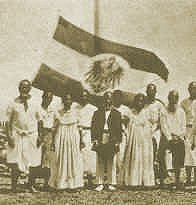
“In order to pay the fighting and the post war reconstruction of the South, Congress was forced to pass historic laws and come up with new taxes.”
THE CIVIL WAR was America’s first total war.
More citizens took up arms in the conflict than had in any other conflict in U.S. history up to that point. Before it was over, more than 2.7 million men had put on a uniform — that’s nearly 10 percent of the entire population of the United States.
The whole economies of the North and the South were reorganized for the war. Nearly 150,000 factories produced weapons and materiel for the clashing armies.
Not surprisingly, funding the conflict took a heavy toll on the nation’s finances. In fact, before it was over, the U.S. national debt had ballooned to 40 times its the pre-war levels. In order to pay the campaigns and the post war reconstruction of the South, Congress was forced to pass historic laws and come up with new taxes. These laws changed the federal budget and U.S. economy forever.
In hopes of putting the financial cost of the war in perspective, our friends at Norwich University’s Online Masters in Military History program have put together the following infographic. Enjoy.
(With files from Norwich University)
 Norwich University’s Online Masters in Military History program
Norwich University’s Online Masters in Military History program









